

A meeting place for a world of reflective writers. The Poem Farm. FUN Critical Thinking Activities. For Students in Any Subject The experts on STAAR, such as the Texas Education Agency, the Lead4Ward team and Regional Service Centers tell us that there are some very specific things that we need to do, and other things we should let go of in order to prepare our students for the state assessment.
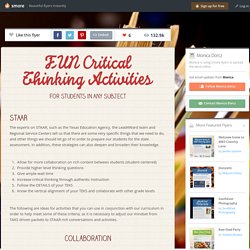
In addition, these strategies can also deepen and broaden their knowledge. Allow for more collaboration on rich content between students (student-centered)Provide higher level thinking questionsGive ample wait timeIncrease critical thinking through authentic instructionFollow the DETAILS of your TEKSKnow the vertical alignment of your TEKS and collaborate with other grade levels The following are ideas for activities that you can use in conjunction with our curriculum in order to help meet some of these criteria, as it is necessary to adjust our mindset from TAKS driven packets to STAAR rich conversations and activities. Talking Chips 1. Pair - Square - Share. K-3 Links. All About Balanced Literacy. Shared Reading is a link in helping students become independent readers.
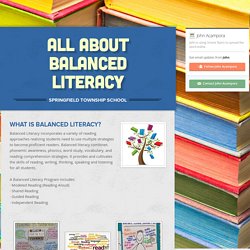
It allows the teacher to model and support students using prediction and confirming skills. It allows less confident students the chance to share stories/articles/poetry in a nonthreatening situation. It focuses on the meaning, fun, enjoyment, characters and sequence of a story and allows them to relate it back to their own experiences. It promotes discussion, problem solving and critical thinking by students. Shared Reading is an interactive reading experience. In the shared reading model there are multiple readings of the books over several days. During the initial reading, the teacher: Independent Reading: 101. What is Independent Reading, Really?
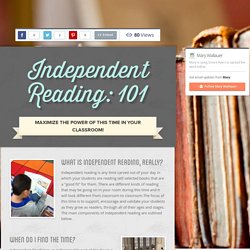
Independent reading is any time carved out of your day in which your students are reading self-selected books that are a "good fit" for them. There are different kinds of reading that may be going on in your room during this time and it will look different from classroom to classroom.The focus of this time is to support, encourage and validate your students as they grow as readers, through all of their ages and stages. The main components of independent reading are outlined below. Science Games for 1st Grade & 2nd Grade . Science . Education. Try some of these free science games for grades 1 and 2 featuring PBS KIDS characters to boost your child’s early development of science skills and interest in science.

Sid the Science Kid: Super Fab Lab Help Sid, May, Gabriela and Gerald play a series of games all about weather, temperature and more! Muscle Memory Learn how to follow directions by clicking on the body part that Sid’s dad tells you to move.Vegetable Patterns Use the vegetables in the baskets to complete the pattern of vegetables on the counter.Super Duper Antibodies! Help Sid use antibodies to fight off the flu virus.I want to be a Scientist! Mrs. Lockett's 2nd grade math pinterest board. Soaring Through Second Grade: My Daily 5-ish. I'm so excited to share a quick overview of my version of Daily 5{ish} with you today!

It's taken me awhile because {I think} I've finally figured out (and it's only the end of the year, right), what works for me and my kids {right now!}. Second Story Window: Daily 5. A lot of people have asked what my daily schedule looks like, so here's a little peek at how things run in my class.
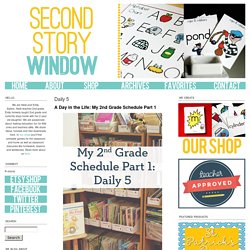
I'm starting by explaining how I do Daily 5 since that program gives my day its main structure. A few years ago I was teeth-gnashing, nail-biting frustrated by the lack of time I had to actually teach. The number of weeks where I had 5 uninterrupted, routine teaching days could be counted on 1 hand. Since most of those weeks fell during the first month of school when all the procedures are still being learned, so they're not really routine anyway. So that comes out to about 2 "routine" weeks during the year. Simply Second Grade. 2nd Grade Stuff. Saddle up for Second Grade. Step into 2nd Grade with Mrs. Lemons. The Parent's Guide to Second Grade. CalkCurricPlan Gr2 ReadWshp. Ms. Pretzel's Super 2nd Graders: Reader's Workshop (Lots of Photos) Reader's Workshop. What is Reader's Workshop?
Reader's Workshop provides students with a supportive environment that involves them in authentic reading experiences that focus on the strengths and needs of each individual student. Grade 2 Reading Units of Study. Grade2 units. 2nd Grade Writing. 25 Anchor Charts for Teaching Writing. Anchor charts are a great way to make thinking visible as you record strategies, processes, cues, guidelines and other content during the learning process.
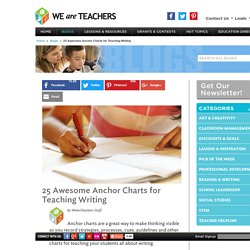
Here are 25 of our favorite charts for teaching your students all about writing. The Why Behind Writers Workshops Source: The First Grade Parade First and second graders will draw inspiration from this fun-filled anchor chart about why we write. Make this chart applicable to older students by expanding on each aspect with a specific audience or goal.
"To share experiences" can become "to share experiences with friends, in a postcard or with readers in a memoir. " Setting Goals Source: second-grade writing-goals chart sets goals around important writing skills for younger students: punctuation, and vocabulary. Teaching With a Mountain View: Anchor Chart Tips & Tricks. Writer's Workshop Resources and Ideas. The majority of time of Writing Workshop is devoted to independent writing.
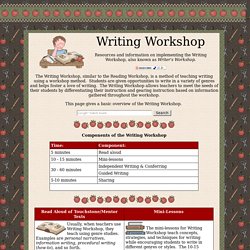
During this time, students are prewriting, drafting, revising, editing, and publishing their pieces. Depending on the age and abilities of your students, independent writing can be as short as 15 minutes or as long as 45-60 minutes. It helps to build stamina with your class, beginning with a short amount of time and building that time until they can work for up 30 minutes or more. Word Study Instruction in the K-2 Classroom. Click the "References" link above to hide these references.
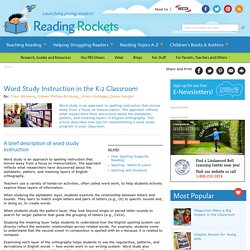
Bear, D.R., Invernizzi, M., Templeton, S., & Johnston, F. (2000). Words their way: Word study for phonics, vocabulary, and spelling instruction (2nd ed.). Upper Saddle River, NJ: Prentice-Hall. Bear, D.R., Invernizzi, M., Templeton, S., & Johnston, F. (2008). Words their way: Word study for phonics, vocabulary, and spelling instruction (4th ed.). Bear, D.R., & Templeton, S. (1998). Beckham-Hungler, D., & Williams, C. (2003).
Brand, M. (2004). Brown, G.D.A., & Ellis, N.C. Cambourne, B. (1995).